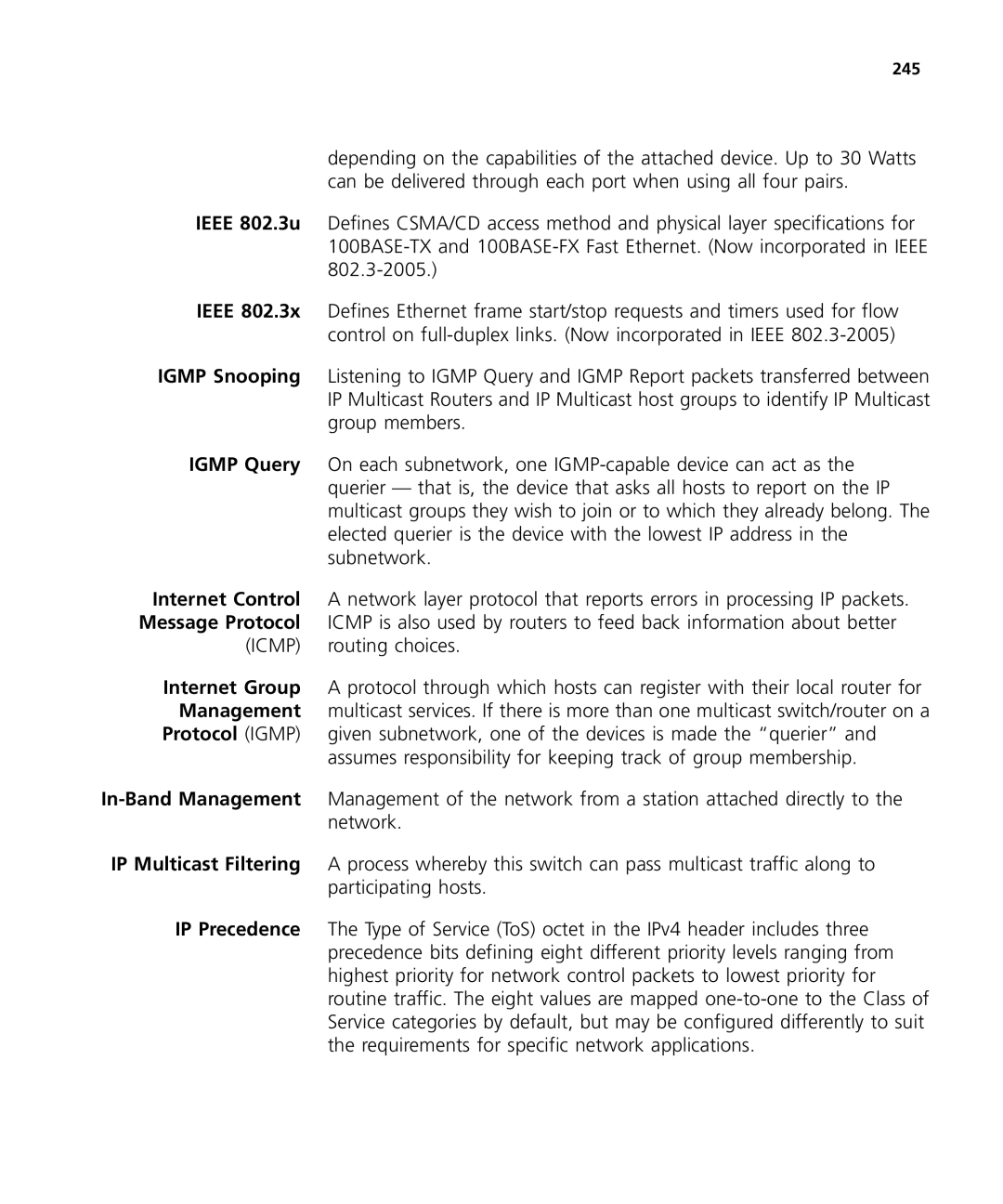245
| depending on the capabilities of the attached device. Up to 30 Watts |
| can be delivered through each port when using all four pairs. |
IEEE 802.3u | Defines CSMA/CD access method and physical layer specifications for |
| |
| |
IEEE 802.3x | Defines Ethernet frame start/stop requests and timers used for flow |
| control on |
IGMP Snooping | Listening to IGMP Query and IGMP Report packets transferred between |
| IP Multicast Routers and IP Multicast host groups to identify IP Multicast |
| group members. |
IGMP Query | On each subnetwork, one |
| querier — that is, the device that asks all hosts to report on the IP |
| multicast groups they wish to join or to which they already belong. The |
| elected querier is the device with the lowest IP address in the |
| subnetwork. |
Internet Control | A network layer protocol that reports errors in processing IP packets. |
Message Protocol | ICMP is also used by routers to feed back information about better |
(ICMP) | routing choices. |
Internet Group | A protocol through which hosts can register with their local router for |
Management | multicast services. If there is more than one multicast switch/router on a |
Protocol (IGMP) | given subnetwork, one of the devices is made the “querier” and |
| assumes responsibility for keeping track of group membership. |
Management of the network from a station attached directly to the | |
| network. |
IP Multicast Filtering | A process whereby this switch can pass multicast traffic along to |
| participating hosts. |
IP Precedence | The Type of Service (ToS) octet in the IPv4 header includes three |
| precedence bits defining eight different priority levels ranging from |
| highest priority for network control packets to lowest priority for |
| routine traffic. The eight values are mapped |
| Service categories by default, but may be configured differently to suit |
| the requirements for specific network applications. |
